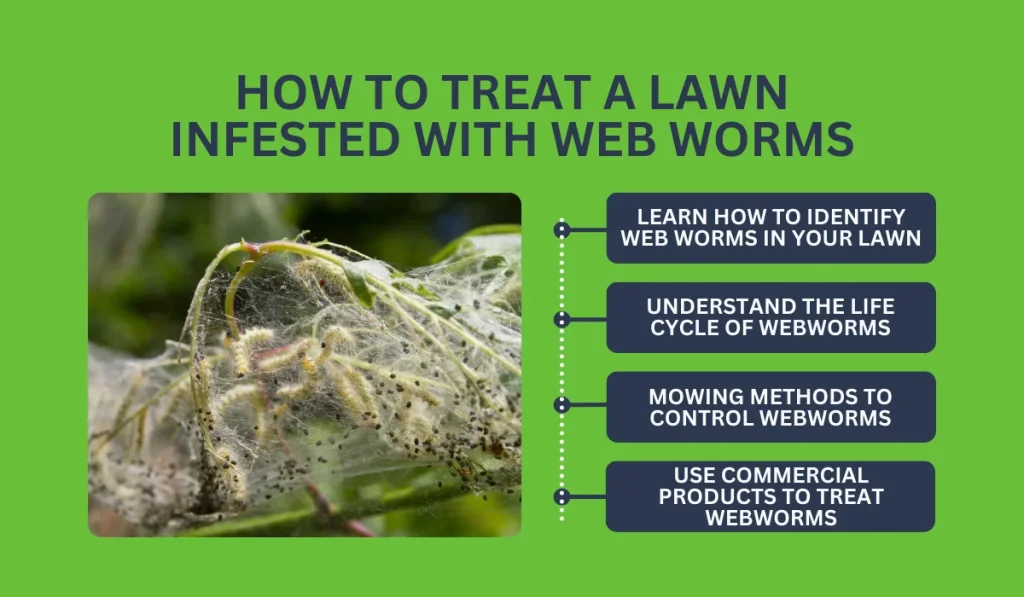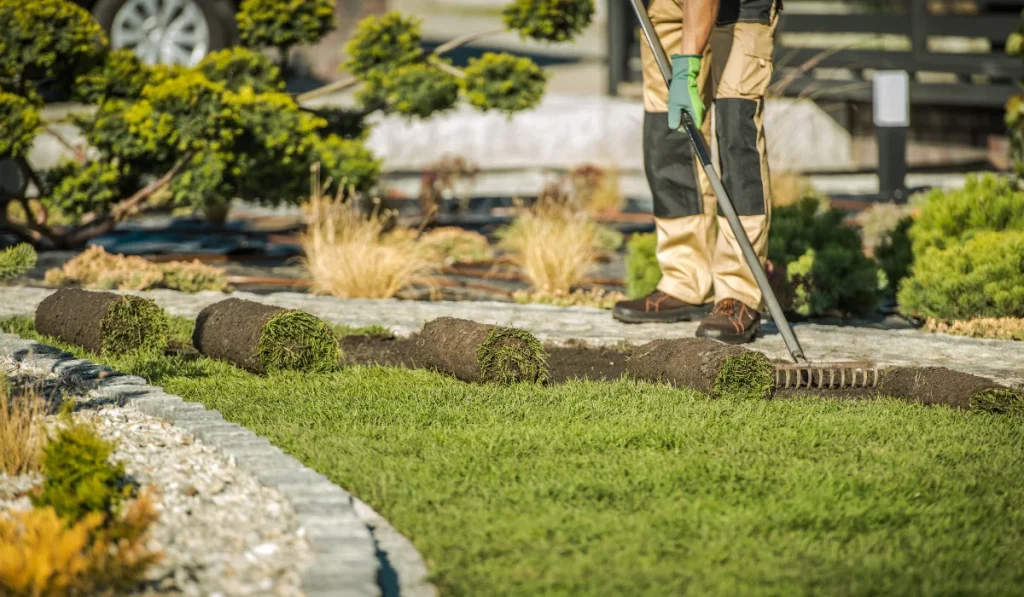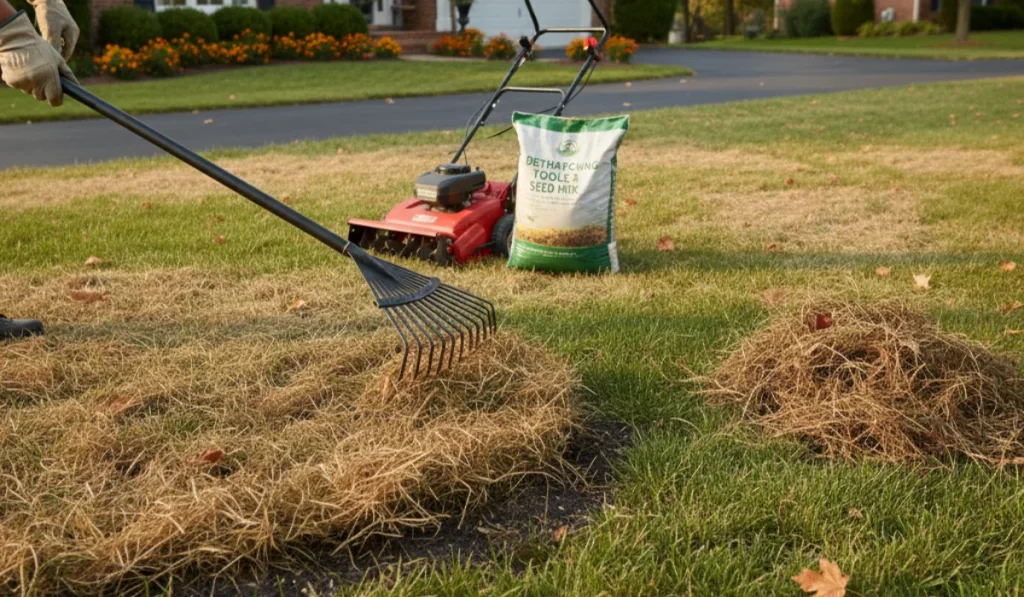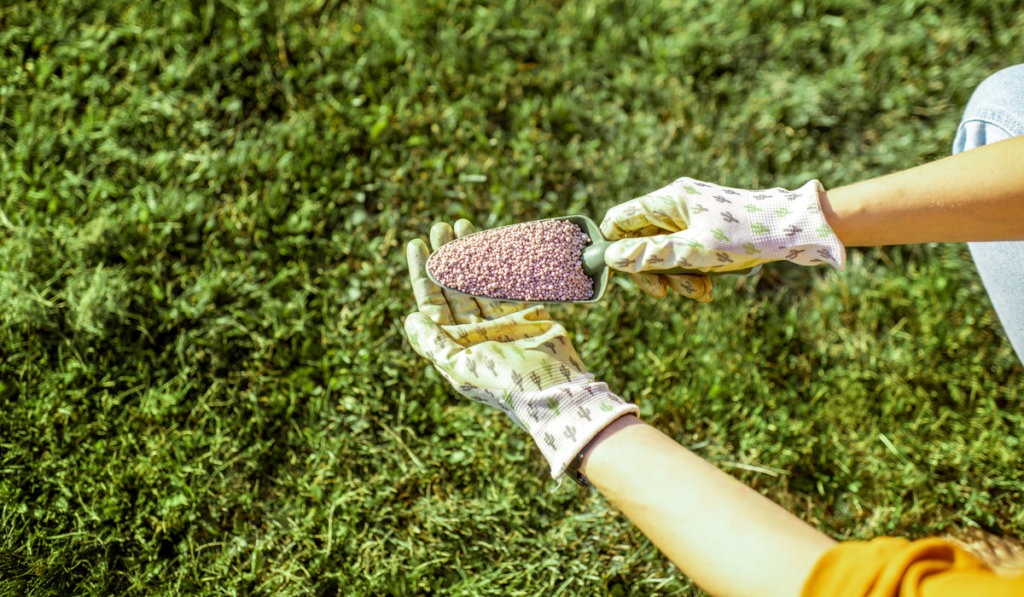Can sod webworms damage your lawn? These lawn pests can ruin your yard, especially during the warmer months. Getting rid of them involves effectively understanding their lifecycle to target them at the right time.
Many homeowners struggle with these pests, but you can save your lawn with the right approach. Read on to learn essential tips and tricks for reclaiming your yard from these nuisances.
Key Takeaways
- Sod webworms can harm your lawn by eating the grass and creating brown patches.
- Knowing what webworms look like and how they grow helps you get rid of them.
- Natural predators or commercial products can help control webworm problems.
- Keeping your lawn healthy with deep watering and regular care can prevent webworms from coming back.
How to Treat a Lawn Infested with Web Worms

Sod webworms can wreak havoc on your lawn. Addressing the problem involves identifying the pests, learning their life cycle, considering natural control methods, and using commercial treatments.
Step 1. Learn How to Identify Web Worms in Your Lawn
Webworms start as larvae, feeding on grass leaves and causing brown patches. In the thatch layer, look for silken tunnels and small green or beige caterpillars.
Adult webworm moths fly around the lawn in the late afternoon and early evening. They have a noticeable wingspan and a white underbelly.
Step 2. Understand the Life Cycle of Webworms
Webworms have a life cycle from eggs to adult moths. Eggs hatch into larvae, which burrow into the thatch and feed. As larvae feed, they grow into caterpillars. After maturing, they pupate in the soil, emerging as lawn moths.
Typically, larvae can overwinter in the soil during the cold months. They can become active in warm-season turfgrasses like Bermudagrass and Zoysiagrass. These pests can also affect cool-season grasses like Kentucky bluegrass.
To effectively control sod webworms, it’s crucial for treatments to coincide with their larval stage.
Step 3. Mowing Methods to Control Webworms
Proper mowing practices, such as avoiding cutting the grass too short, can further deter webworms. Consider other practices, such as removing excess thatch and using endophyte-enhanced fescue.
Step 4. Use Commercial Products to Treat Webworms
If natural methods aren’t effective, you can turn to commercial products with stronger ingredients. Common ones include insecticides like bifenthrin or pesticides containing granular formulations.
Apply products in the late afternoon when larvae are most active, as this is when they come closer to the surface to feed.
Professional pest control might be necessary for severe lawn infestations.
How to Prevent Future Web Worm Infestations
Simply learning how to get rid of sod webworms isn’t enough. Keeping them and other pests at bay is the ultimate goal.
Here are the lawn care steps to take to ensure a green lawn year-round:
- Keep the grass longer to encourage deep rooting and create an environment less favorable for webworms.
- Water the lawn deeply but infrequently to promote strong root growth and help the grass resist pests.
- Apply a balanced fertilizer with a spreader to strengthen the grass and make it more resilient to lawn pests.
- Opt for grass types less prone to web worms and diseases by consulting with a local nursery.
- Introduce beneficial nematodes to the soil surface to naturally remove web worms without harming the lawn.
- Use insecticidal drenches to target larvae, ensuring they are safe for your grass type.
- Aerate your lawn to improve soil health and reduce compaction, making it less hospitable for pests.
- Rake regularly to control thatch buildup, the layer of organic matter between the soil and grass.
- Check your lawn regularly for signs of web worms to catch infestations early and prevent further damage.



